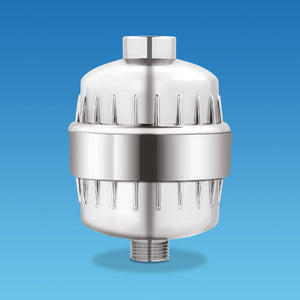When your tap water appears cloudy or milky, it could be due to several factors. Sometimes, air bubbles can be present, but it could also imply an issue with your water filtration system, particulate percentage, water type, gas, or sediment.
Thankfully, there are several fixes. In this post, we’ll discuss them all:
Is Cloudy Tap Water Safe To Drink?
The presence of cloudiness in drinking water might raise understandable concerns about its safety and quality. Generally, cloudy water caused by air bubbles poses no risk to human health.
That said, other causes of cloudiness could signify water quality or pressure issues that require your attention.
The Environmental Protection Agency (EPA) standardizes water quality standards that public water systems must meet to ensure safe drinking water for consumption. Notifying them of a regional issue may be necessary in severe cases.
What Causes Cloudy Tap Water?

Several issues can cause cloudy tap water. This can range from harmless air bubbles in drinking water to more serious water quality problems.
Taking the time to understand possible causes will help you decide whether action needs to be taken to address each issue in turn. Remember, if one issue is present, that does not preclude the existence of all the rest.
Let’s look at some of the most common:
1. Trapped Air in the Pipework
The most common reason for cloudy water is trapped air in your plumbing system. When water pressure changes take place within household pipes, air bubbles will form and become suspended in your drinking water.
This often happens when you first turn on the faucet, especially in cold water, as cold water holds more air than warm water.
The cloudiness disappears as pressure normalizes and the air escapes for the most part, so run your tap a little, both with hot and cold water, and see if that addresses the pressure and restores normal flow.
2. Particulate in the Water Supply
The drinking water supply may contain suspended particles that create a cloudy appearance. This could include various particulates, such as white particles, calcium carbonate, or other dissolved minerals that can be naturally present in your distribution system.
Sometimes, construction work or maintenance on nearby water mains might temporarily increase this. Again, running the taps for a while may solve the issue with particularity or help you see an issue with water pressure.
3. Hard Water
Hard water contains high levels of minerals, specifically calcium and magnesium. This is most commonly defined by the region you’re in, but there can be other causes, too.
Such minerals can create a cloudy appearance and leave white spots on plumbing fixtures, too, a telltale sign.
While levels of mild to moderately hard water are generally safe for consumption (and many enjoy this drinking water with no problems), extremely hard water might affect water quality, drinkability, and the lifespan of your hot water heater and other appliances part of your wider plumbing system.
4. There's Methane Gas in Your Tap Water
In some regions, especially areas near gas deposits or well water, methane gas can occur naturally and soak into the drinking water supply, causing the aforementioned kind of air bubbling.
That means it creates a milky appearance as the gas bubbles rise. While low percentages (and concentrations) of methane gas might not cause immediate health risks, high levels require professional attention.
You can have this tested by a qualified plumber where appropriate, who will also check water pressure, air bubbles, and sediment.
5. Build-ups of Sediment
Sediment build-up in your hot water heaters or household pipes can lead to cloudy water. This most commonly happens when the dip tube in your water heater stops working, which allows sediment to mix with your hot water.
Having your tank routinely cleared can help with this, as can having your dip tube replaced.
6. There's a High Concentration of TSS in Your Water
Total suspended solids (TSS) describe particles that stay suspended in your drinking water. High levels of TSS can easily affect clarity but might also impact water quality standards and make it unsafe to drink.
These total suspended solids can include various materials, from minerals to bacteria, and their presence might suggest a need for further information from your local water authority.
Call them at your earliest convenience before drinking anything.
Can Cloudy Water Make You Sick?
As you can tell from the possibilities above, cloudiness caused by air bubbles may not pose any risks to human health. That said, other contaminants, such as methane gas in high quantities causing a cloudy appearance, might affect health or, in the case of hard water, damage utilities such as your hot water heater.
With the naked eye, it’s hard to determine which is the cause of your particular plumbing fixtures and the wider system. Keep in mind that bacteria in water could potentially cause illness if present at high levels.
It’s generally advised that if your water begins to smell unusual, you detect a musty or gassy smell in the air, or if it contains visible particles, having your water tested before drinking it is wise.
This is one of the services that emergency plumbers provide, so call them day or night and stick to bottled water, which is likely to carry much less unsafe bacteria, for now.
How to Fix Cloudy Tap Water
The good news is there are many means to address cloudy water issues, depending on the underlying cause. The necessary fix will, of course, depend on being diligent about identifying what it is that’s wrong and if it’s a temporary or persistent issue.
Here’s how:
Flush the System

Running your faucet for several minutes might help clear cloudy water, especially when the issue is caused by air bubbles, small quantities of methane gas, or temporary changes in water pressure as outlined above.
Do so with both cold and hot water. This process allows trapped air to escape and water quality to flow back to normal. It may take several minutes, and you may encounter several splutters while this happens.
Just wait for this to clear before continuing with your washing or food preparation.
Clean or Replace Aerators
It’s easy for mineral build-up in faucet aerators to cause that cloudiness or, at the very least, part of it. These small screens might benefit from infrequent (but still reliable) cleaning to remove the built-up calcium and other minerals that affect your water flow.
Check Water Filters
Good water filters can help you sustain water quality over an impressive period of time, with soft or hard water. That doesn’t mean they last forever.
We’d recommend inspecting and replacing filters according to manufacturer recommendations because this will ensure the most reliable filtration and clearest water that can be used.
Inspect Plumbing

If none of the above works, a full-scale examination of your house plumbing system might help you find the issues affecting water clarity, be that in soft or hard water.
As we mentioned above, this can potentially include more than one cause listed here. Be sure to look for signs of deterioration or even damage in pipes or unusual pressure changes that could introduce more air into the system as the water hits.
For instance, if your radiators aren’t working correctly or you notice issues while preparing food, this could indicate a deeper problem.
Check with Neighbors
Comparing experiences with those who live near you (and are most often supplied by the same water carrier) can help you understand whether cloudiness issues come from the public water systems or your individual property.
After all, spending a great deal of time searching for a solution during a conversation could determine whether it’s above your pay grade, which may be a helpful approach.
How Can a Showerhead Filter Improve Your Water Quality?

Cloudy water isn’t just unpleasant to drink; it can be unpleasant and even unhygienic to wash ourselves with. Installing a quality showerhead filter will be an effective solution for improving water quality and reducing cloudiness caused by all the above contaminants.
This applies to both soft and hard water. Treating your water supply is, of course, essential, and this can be a fantastic first step. AquaBliss showerhead filters provide superior filtration that not only removes sediment but also helps reduce chlorine.
Yes, we can also help to manage those hard water issues. Their installation helps provide an extra layer of filtration and, thus, protection for your family's daily water usage, both for showering and general household needs. This way, you won’t need to wash with bottled water, even temporarily.
The AquaBliss multi-stage and revitalizing shower filters can provide complete or simple solutions for any shower system without changing your water pressure and retaining the vitamins and minerals you need without such harmful particles present.
That’s because the filtration system works effectively with both cold and hot water and so can be used in any household.
Use AquaBliss - Ensuring Clear, Safe Water for Your Home
There are many possible causes of cloudy water, but understanding how to identify them and what each possible issue could mean allows you to implement the appropriate response necessary.
While many instances of cloudy tap water are generally from harmless and tiny air bubbles, staying mindful of changes in your water's appearance, smell, or taste helps ensure safe and enjoyable water coming for drinking, food preparation, and usual daily activities.
If you’re at all concerned, be sure to speak to a reliable plumber. However, utilizing helpful products such as AquaBliss shower filtration systems will allow you to keep up your daily hygienic schedule while you attend to fixing the wider issues.
This means life in your household (or in your commercial facility) doesn’t have to pause as you restore and re-filter the water coming from your taps. For further water filtration products and further information about when to use them, please visit our website.







